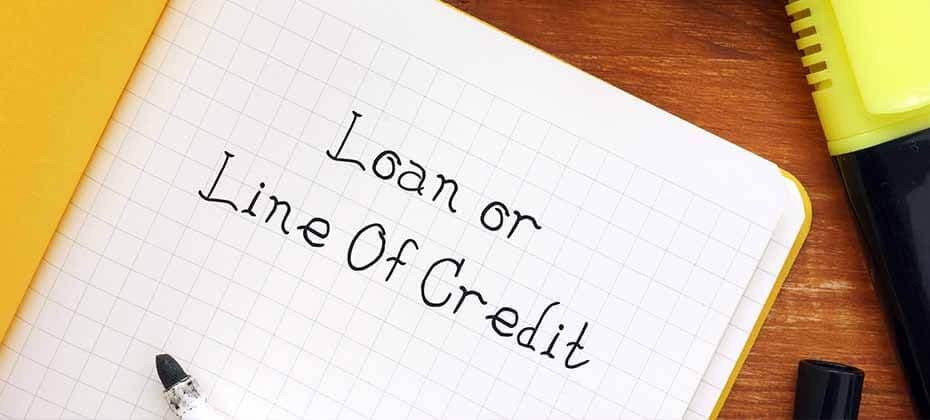Line of Credit vs Personal Loan: Understanding The Differences

Need to borrow money but unsure which option is best? Whether you're planning a home renovation, consolidating debt, or need funds for an emergency, understanding the difference between a line of credit and a personal loan is crucial.
In this comprehensive guide, we'll break down both options to help you make an informed decision. Later, we'll also introduce Credit24's flexible solutions that could match your specific needs.
What is a personal loan?
A personal loan provides you with a one-time lump sum that you repay over a fixed period. Think of it as borrowing a specific amount for a specific purpose, with clear start and end dates. You'll make regular repayments (usually monthly) that include both principal and interest, typically over a term of 1 to 7 years.
Types of personal loans
Personal loans come in two main forms:
Secured personal loans: require you to provide an asset (like a car or property) as collateral. This security often leads to:
Lower interest rates
Higher borrowing amounts
Longer repayment terms
Greater approval chances
Unsecured personal loans: don't require collateral, making them a more flexible option. Credit24 specializes in these loans, offering:
Quick online applications
Fast approvals within minutes
Transparent fee structure
Loans from $500 to $10,000
No security required
What is a personal line of credit?
A line of credit functions differently from a personal loan, operating more like a flexible financial tool that you can tap into whenever needed. Instead of receiving a lump sum, you get access to a preset borrowing limit that remains available to you over time. Furthermore, you only pay interest on the amount you actually use, rather than the entire credit limit.
How Credit24's line of credit works
Our line of credit is designed to offer flexibility with clear and transparent terms. When you open a virtual credit account, you may be eligible for a credit limit between $500 and $10,000, subject to lender assessment.
Key features include:
No setup charges, account-keeping fees, or withdrawal costs – all applicable fees and charges are disclosed upfront.
Flexible repayments – Repay over a period of up to 36 months, with the option to pay off your balance early and potentially reduce interest costs (subject to lender policies).
Interest rates, eligibility criteria, and repayment conditions apply. Borrowers should review the loan agreement carefully to understand all applicable terms before proceeding.
Line of credit vs personal loan: key differences
Understanding the key differences between a personal loan and a line of credit can help you choose the best option for your financial needs.
Personal loans work best when you have a specific purpose in mind, as they provide a fixed amount with structured repayments over a set period. The fixed interest rate makes budgeting easier, since your monthly payments remain consistent throughout the loan term.
Conversely, a line of credit offers more flexibility, allowing you to borrow and repay as needed. While this option typically comes with variable interest rates, it provides the advantage of only paying interest on the amount you've actually borrowed. This revolving nature makes it particularly suitable for ongoing expenses or situations where you're unsure of the total amount you'll need. Borrowers should assess their financial situation and compare options before making a decision.
Understanding the costs of personal loans vs line of credit
When comparing these options, it's crucial to look beyond just the interest rates. With a personal loan, you'll know exactly how much you're borrowing and what you'll pay each month, making it easier to plan your budget long-term. Additionally, fixed interest rates protect you from market fluctuations, ensuring your repayments remain consistent throughout the loan term.
On the other hand, while a line of credit might have variable rates, you only pay interest on the amount you use. This means you could potentially save money if you only need to borrow occasionally or if you're able to repay your balance quickly. However, you'll need to be more vigilant about managing your repayments since they can vary based on your borrowing patterns and interest rate changes.
How to choose between line of credit vs personal loan
Your choice between these two options should primarily depend on your specific financial needs and preferences. Consider your borrowing purpose first - if you're planning a one-time purchase with a known cost, such as a car or home renovation, a personal loan might be your best bet. The structured nature of personal loans helps ensure you'll pay off the debt within a specific timeframe.
However, if you're facing uncertain expenses or want more flexibility in your borrowing, a line of credit could be more suitable. This option particularly benefits those who want ongoing access to funds without having to reapply for a new loan each time they need money.
Interest rates and repayment structures should also factor into your decision. While personal loans typically offer the security of fixed rates and consistent payments, lines of credit provide the flexibility to borrow only what you need, when you need it. Furthermore, with a line of credit, you have the freedom to make additional repayments without penalty, potentially reducing your overall interest costs.
Why choose Credit24?
Whether you’re considering a personal loan or a line of credit, Credit24 offers financial solutions with clear terms and flexible options. Our personal loans provide the security of fixed repayments, while our line of credit allows you to borrow as needed, with all applicable fees and interest rates disclosed upfront.
Our online application process is designed for convenience, and eligible applicants may receive fast approvals and timely funding. All applications are subject to assessment, including affordability checks and eligibility criteria, to ensure responsible lending practices. We are committed to providing clear and accessible financial solutions to help you manage your borrowing needs effectively.

